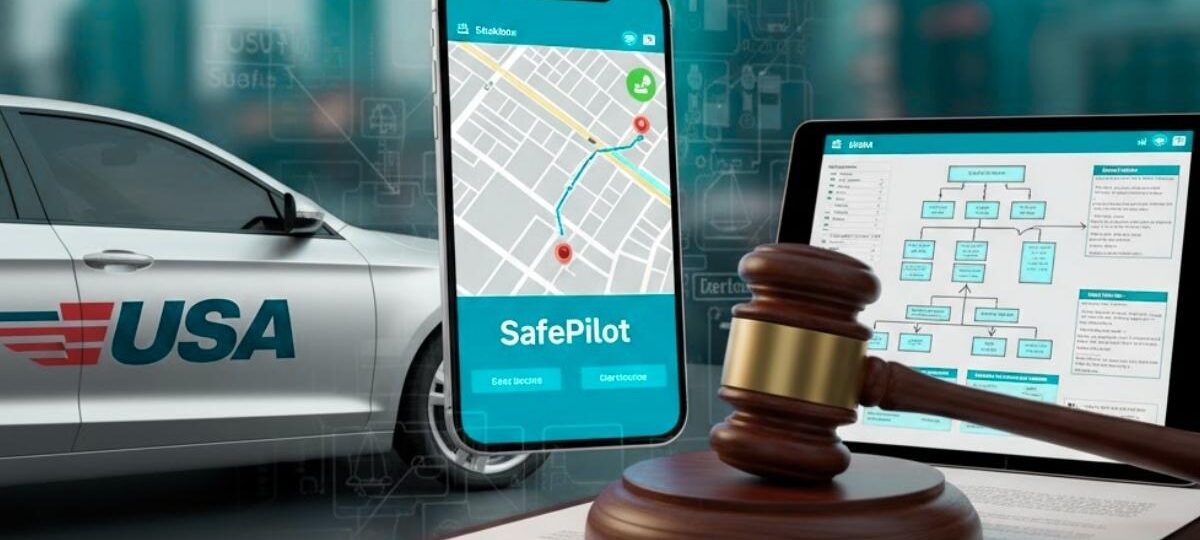The intersection of insurance and technology, known as telematics, is rapidly transforming how car insurance premiums are calculated. At the heart of this digital shift is the rise of usage-based insurance (UBI) programs, where mobile apps track driving behavior to offer personalized discounts. One such program is the United Services Automobile Association’s (USAA) SafePilot app, a central figure in a recent intellectual property battle that underscores the intense competition and complexity of patent law in the fintech and insurtech space.
While USAA is perhaps best known in patent litigation for its major lawsuits concerning mobile remote check deposit technology—resulting in massive judgments and subsequent appeals against financial giants like Wells Fargo and PNC Bank—the SafePilot patent lawsuit introduces a compelling new front in the intellectual property wars. This case focuses not on banking, but on the proprietary algorithms and methods used to track and score driver behavior, threatening to reshape the telematics landscape for the entire insurance industry.
The Heart of the Dispute: Telematics Technology
USAA’s SafePilot program, like many UBI offerings, encourages safer driving by using a smartphone app to collect data on key driving metrics. These typically include:
- Hard Braking: Sudden decelerations that indicate aggressive or distracted driving.
- Phone Handling: Usage of the device while the vehicle is in motion.
- Speeding: Exceeding posted speed limits.
- Time of Day Driving: Assessing risk based on when a member drives (e.g., late at night).
The proprietary systems and methods used to collect, analyze, and score this data are what USAA and other companies seek to protect through patents.
In a key development for the SafePilot program, a lawsuit was filed against USAA by Auto Telematics Ltd. (a company formerly known as Snoring Dog Ltd.) in the Western District of Texas. This plaintiff alleged that USAA’s provision of the SafePilot mobile app—which logs driving information associated with a vehicle through a mobile device for tracking and scoring users—infringes on several of its patents. These patents broadly relate to downloaded applications that capture and log driving information.
The core legal question, as in many patent cases, revolves around whether USAA’s technology in SafePilot utilizes the specific, protected methods outlined in the plaintiff’s patents, and whether those patents themselves are valid.
Contextualizing the Legal Strategy
It is crucial to view the SafePilot lawsuit within the broader context of USAA’s aggressive stance on protecting its innovations. USAA has consistently demonstrated a willingness to pursue litigation to enforce its intellectual property rights, particularly those developed to serve its military-affiliated customer base.
The most famous examples involve the patents for Remote Deposit Capture (RDC) technology, which allows customers to deposit checks by taking a picture with their mobile phone. In the RDC cases:
- Wells Fargo faced a combined jury verdict of over $302.8 million for willful infringement before the parties reached an undisclosed settlement.
- PNC Bank was hit with verdicts totaling nearly $223 million, although an appellate court later overturned key patent infringement findings, leading to an appeal to the Supreme Court.
This history shows that USAA is highly litigious and strategic in its choice of venue, often favoring the U.S. District Court for the Eastern District of Texas, known for its rapid handling of patent cases. The SafePilot suit, filed in the Western District of Texas, continues this trend of asserting control over crucial technological innovations.
The SEO and Industry Impact: A High-Stakes Game
From a broader industry perspective, the outcome of the USAA SafePilot patent lawsuit holds significant implications for the future of insurtech and competitive marketing.
SEO and Market Share Implications
In the modern insurance market, UBI programs like SafePilot are powerful marketing tools and key differentiators. Search Engine Optimization (SEO) for terms like “usage-based insurance,” “safe driving discount apps,” and “car insurance telematics” is fiercely competitive. A favorable ruling for USAA in the SafePilot case could solidify its proprietary claims, potentially forcing competitors to either:
- License USAA’s technology for their own telematics apps, providing USAA with a new revenue stream.
- Redesign their UBI programs to avoid infringement, a costly and time-consuming process.
Conversely, if the asserted patents are invalidated, it could open the door for more innovation and competition, accelerating the adoption of new, unencumbered telematics features across the industry. This is why search visibility for phrases like “telematics patent validity” and “UBI technology infringement” is so important to both insurers and their tech vendors.
The Future of Personalized Insurance
The underlying technology being litigated—the method for accurately sensing, logging, and scoring driver behavior using a mobile device—is the bedrock of modern personalized auto insurance. The resolution of the SafePilot case will define the boundaries of intellectual property protection in this sector. It could clarify which specific methods of data capture (e.g., distinguishing a driver from a passenger, accurately identifying phone-handling) are proprietary innovations and which are deemed “abstract ideas” or simply obvious applications of existing technology.
Conclusion: Technology’s Tightening Grip on Insurance
The USAA SafePilot patent lawsuit is more than just a legal battle; it is a critical juncture for the insurtech industry. Like the mobile check deposit cases before it, this litigation is setting crucial precedents for what constitutes a protectable invention in a highly digitized service environment.
As customers increasingly look for personalized pricing and incentives like the SafePilot discount, the proprietary technology that makes these programs possible becomes an insurer’s most valuable asset. The outcome of this case will not only determine potential damages or licensing fees but will also cast a long shadow over how all insurance companies develop, market, and legally protect their next generation of UBI and telematics offerings.
See Also: Why Insurance Companies Pay More When Injury Victims Hire a Personal Injury Lawyer










